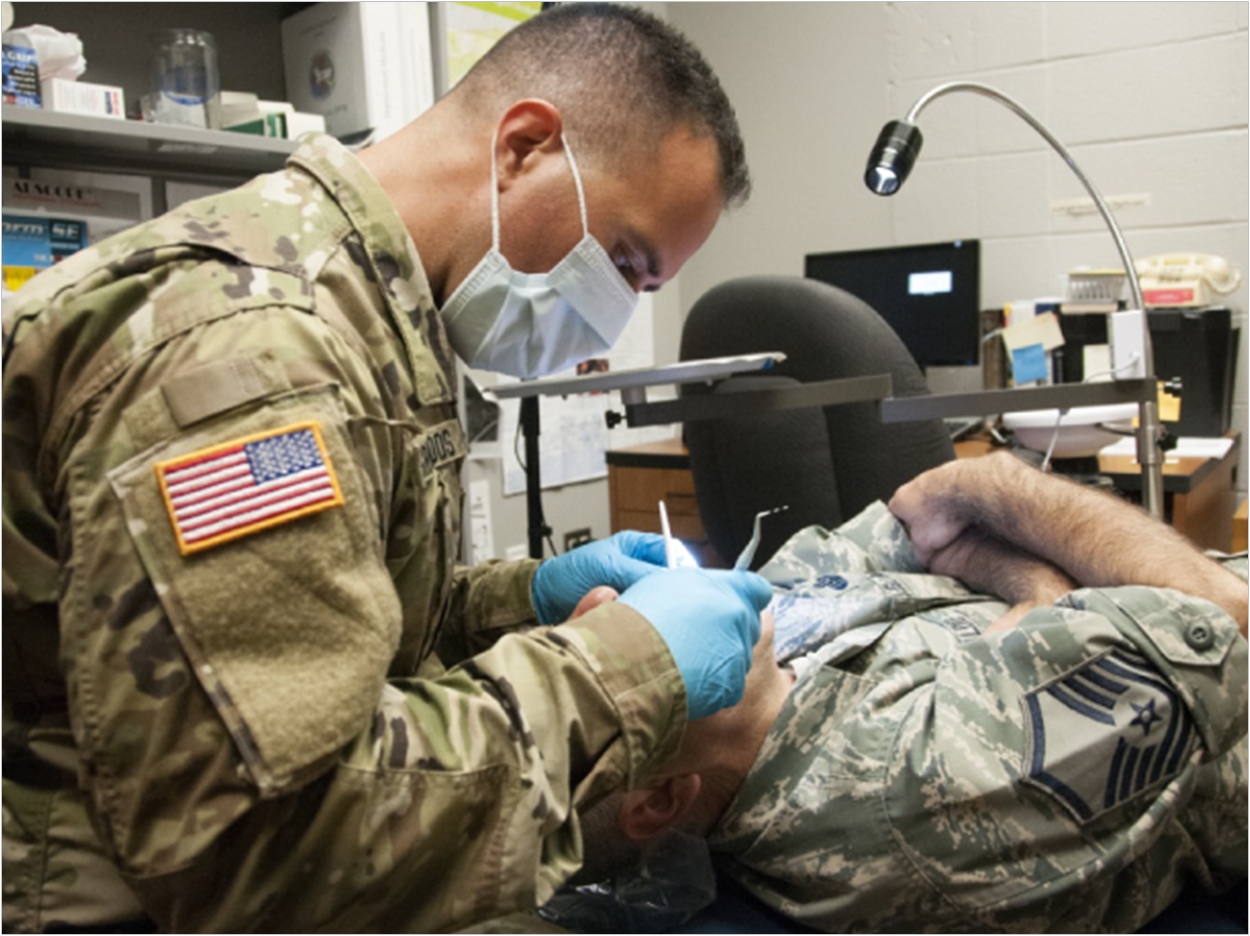
The United States Army, Navy, and Air Force have implemented common standards for how they determine necessary staffing levels at their health clinics for a number of medical specialties but haven’t done so for their dental clinics, reports the Government Accountability Office (GAO), which adds that Department of Defense (DOD) dental clinics may not be staffed as efficiently as possible to provide dental care across the military services as a result.
The military services also have struggled to recruit and retain certain types of dental specialists such as oral surgeons. The GAO recommends that the services develop a common set of dental staffing standards and a process to evaluate recruitment and retention efforts. The Army and Air Force use validated staffing models based on service-specific standards for their respective dental clinics, and the Navy has developed a model that is under review.
The Army’s model generally projects dental clinic staffing based on historical facility data. The Air Force model is largely a population-based model requiring one dentist for every 650 servicemembers. In the absence of a validated model, the Navy uses a general ratio of one dentist for every 1,000 servicemembers to staff its dental clinics. If approved, the Navy’s model will be subject to the Navy’s validation processes.
While the services have developed and implemented cross-service staffing standards for 42 medical specialties, they currently do not plan to develop a similar set of standards for dental care. According to the GAO, cross-service staffing standards help the services standardize clinic staffing to address the common day-to-day health needs of patients.
Service officials say they must operate their dental clinics autonomously and in a manner that best supports their service-specific needs and unique command structures. But as oral health requirements for servicemembers are standardized across the DOD, the GAO says, it is unclear why dental care has been excluded from the staffing standardization effort, especially because the services have implemented cross-service staffing standards for 42 other medical specialties.
The Army, Navy, and Air Force meet their needs for military dentists by recruiting both dental students and fully qualified dentists. The services generally met their recruitment goals for dental students between fiscal years 2012 and 2016 but faced challenges recruiting and retaining fully qualified dentists during that period. The Army missed its goals for fully qualified dentists in all five years, the Navy missed in two years, and the Air Force missed in three years.
These challenges are most pronounced for certain specialties, the GAO reports. The Army and Navy were unable to recruit any oral surgeons, while the Air Force recruited 50% of the oral surgeons it needed. Service officials cited various reasons for missing their goals, including the availability of more lucrative careers in the private sector and quality of life concerns associated with military service.
The services rely on various programs including scholarships, special pay, and incentives to attract and retain military dentists, and service officials stated that they monitor their programs by reviewing their goals, among other actions. But the GAO found that some services continue to provide incentive bonuses for positions that are overstaffed and have met or exceeded recruitment goals, but they do not know whether this is necessary because they have not evaluated the effectiveness of their programs.
Without evaluating their programs, the GAO says, the services lack the information necessary to ensure they are using recruitment and retention incentives effectively and efficiently for attracting and retaining dentists. The DOD, however, has taken steps to modernize its Military Health System to ensure it operates efficiently.
In September 2013, the DOD created the Defense Health Agency in part to implement common clinical and business processes across the services. Essential to this effort is the services’ ability to effectively staff their medical facilities, included the processes used for staffing dental clinics and the services’ ability to recruit and retain military dentists.
Senate Report 115-125 included a provision for the GAO to review the services’ processes for determining requirements for dentists and its programs for recruiting and retaining military dentists, among other things. The GAO assessed the extent to which the services:
- Use validated dental clinic staffing models that also incorporate cross-service staffing standards
- Have recruited and retained military dentists and measured the effectiveness of their recruitment and retention programs.
The GAO assessed service dental clinic models, analyzed recruitment and retention data from fiscal year 2012 through 2012, and interviewed DOD and service officials. It recommends that each of the services develop cross-service staffing standards to be incorporated into their staffing models and evaluate the effectiveness of their recruitment and retention programs.
Related Articles
Dentists Give Back While Serving in the Army Reserve
Dental Programs Improve US Military Reserves’ Readiness












